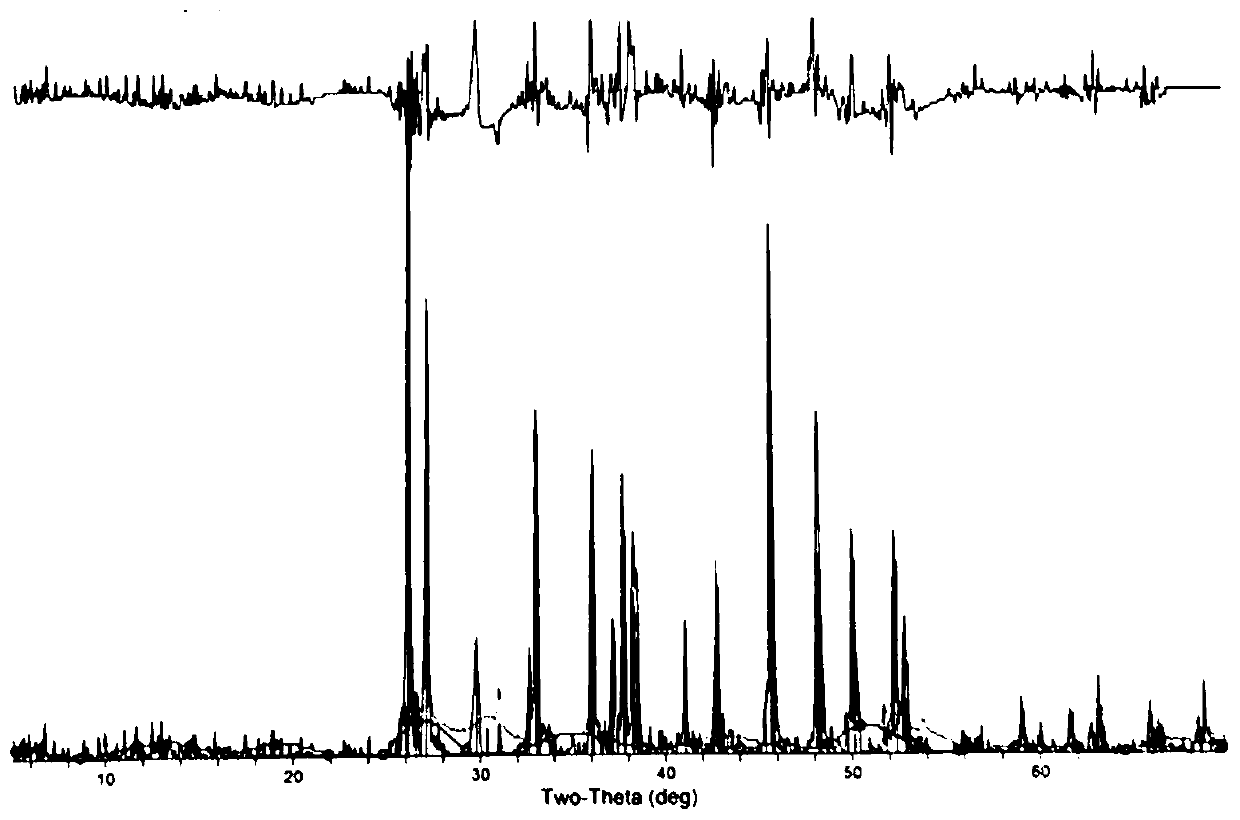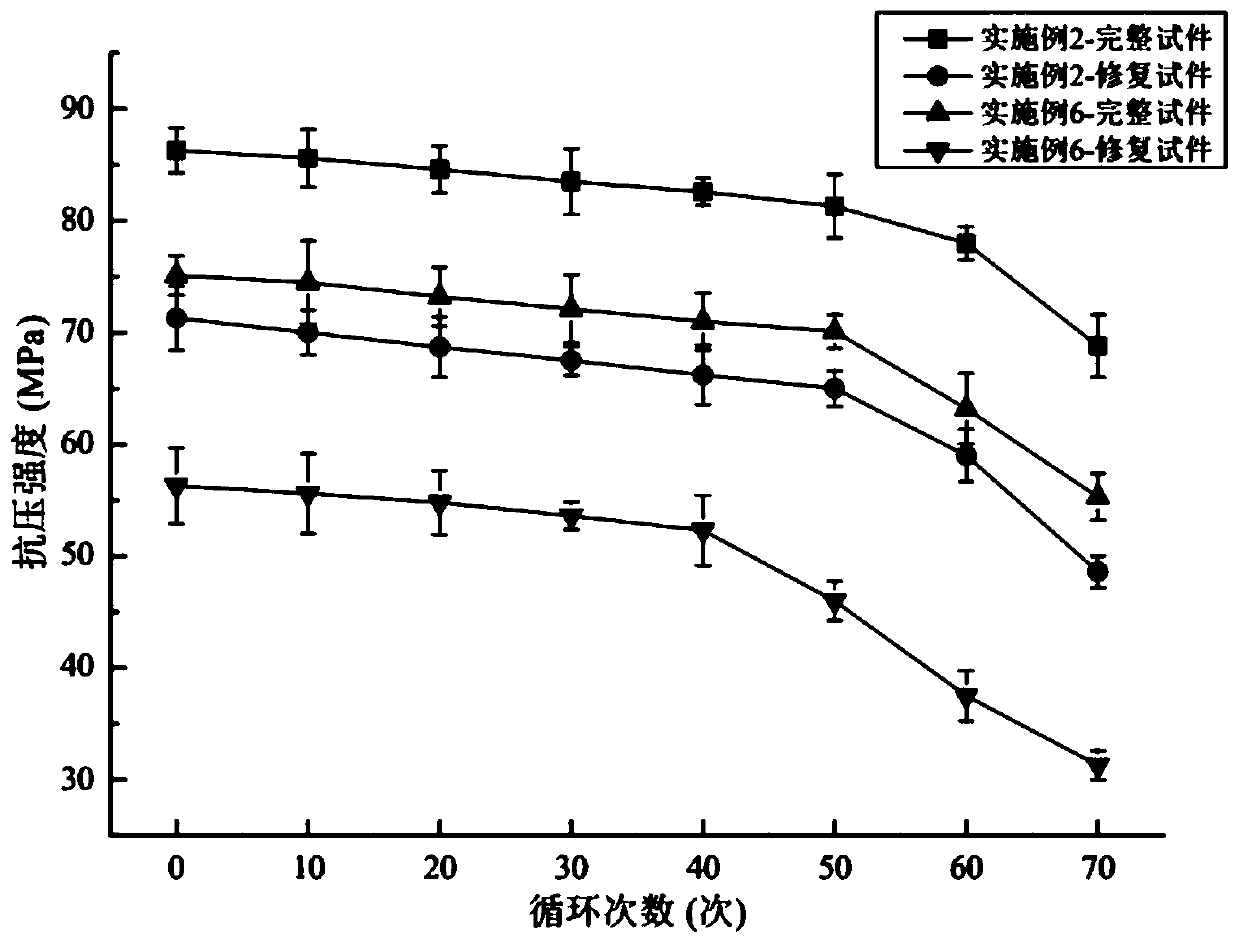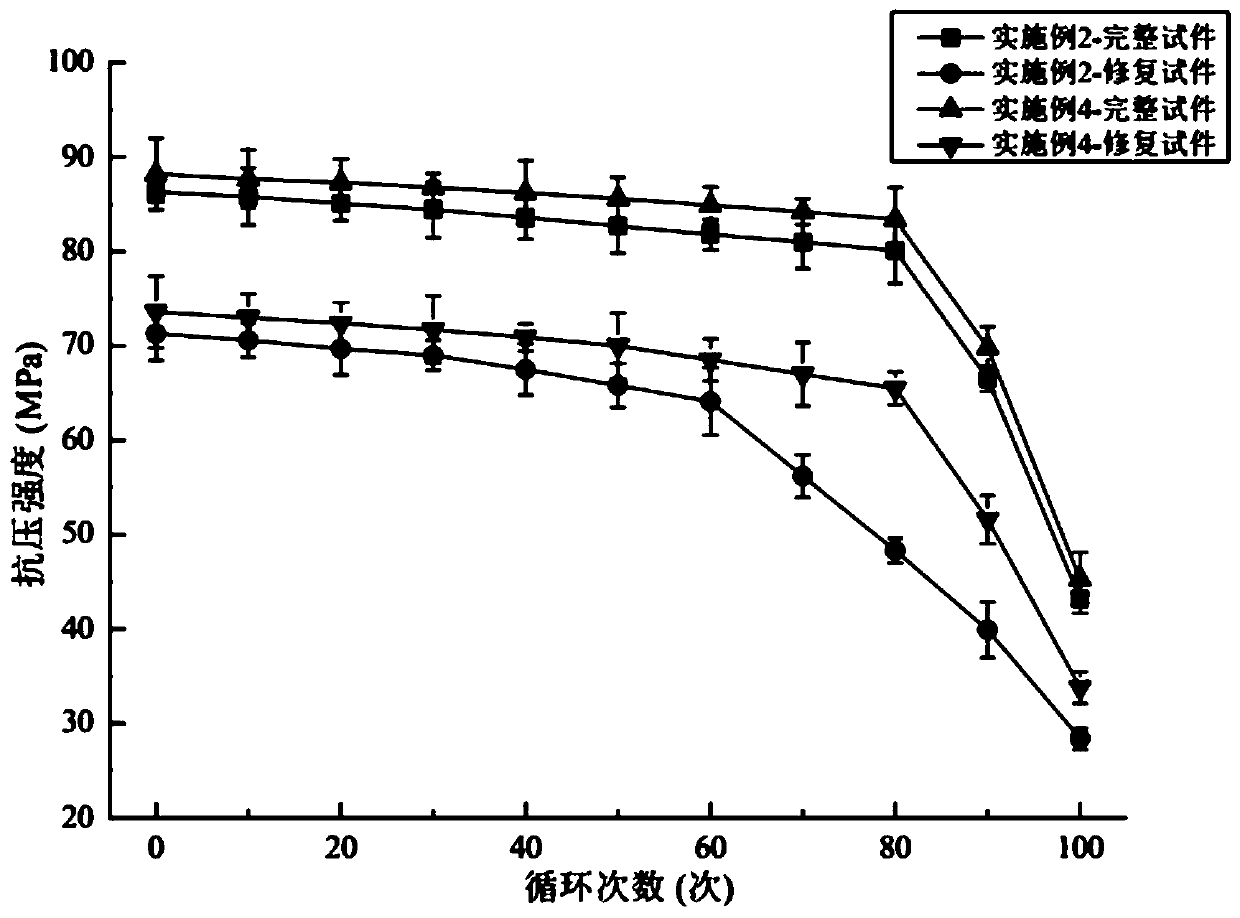Microbial immobilization method for self-repairing of concrete cracks
A technology of microorganisms and concrete, which is applied in the interdisciplinary field of microbiology and civil engineering materials, to achieve the effects of enhancing sulfate erosion resistance, reducing compressive strength loss, and enhancing durability
- Summary
- Abstract
- Description
- Claims
- Application Information
AI Technical Summary
Problems solved by technology
Method used
Image
Examples
Embodiment 1
[0036] A method for immobilizing microorganisms, the specific steps of which are as follows:
[0037] (1) After activating Bacillus colii, inoculate it into a liquid medium, then cultivate it for 30 hours at a temperature of 35° C. to obtain a bacterial liquid, and then centrifuge the obtained bacterial liquid with a centrifuge at a speed of 5000 r / min for 25 min to obtain Bacterial slime, the composition of the above liquid medium is: ultrapure water 1L, yeast powder 5g, trimethylglycine 4.5g, tryptone 10g, ammonium sulfate 5g, glutamic acid 2g, urea 10g;
[0038] (2) Dilute the sludge with sterilized distilled water to a concentration of 6.5×10 7 cells / mL, make a bacterial suspension, crush the carrier coral reef calcareous sand to a particle size of 3mm, then put it into the bacterial suspension, and then soak the bacterial suspension at -0.08MPa pressure for 24 hours, then take out the coral reef calcium sand, and then dried to a constant weight in an environment of 45°C ...
Embodiment 2
[0042] A microbial immobilization method for concrete crack self-repair, the specific steps are as follows:
[0043] (1) Put cement, natural stone, recycled coarse aggregate, sand, silica fume, calcium chloride, polypropylene fiber, water reducing agent and water into the mixer, and stir evenly;
[0044] (2) Then put the microorganism-immobilized carrier prepared in Example 1 into it, and then stir for 1min, put the mixed concrete into the mould, and naturally maintain it to obtain the concrete with self-healing cracks, the above-mentioned microorganism-immobilized carrier The weight ratio in concrete raw materials is 10%.
Embodiment 3
[0046] A method for immobilizing microorganisms, the only difference between this embodiment and Example 1 is that the slurry used in step (3) also contains 0.03wt% phenylacetic acid-2-methylpropyl ester and 0.05wt% oxidized Styrene, the two are adsorbed into the carrier, due to its hydrophobicity, the arrangement of the molecules of the wrapping material changes, and the hydrophobic group is arranged on the outermost side, which makes the hydrophilicity of the carrier significantly reduced and the hydrophobicity increased, thereby avoiding bacteria or spores It can be revived in advance when it encounters water in concrete, and the dormant period will not be affected by water seepage. In addition, it can also participate in the deposition of calcium carbonate after the carrier is broken, and enhance the impermeability of the cracks, thereby reducing the compressive strength of the repaired concrete under freeze-thaw conditions. Reduction can enhance the frost resistance of the...
PUM
| Property | Measurement | Unit |
|---|---|---|
| particle diameter | aaaaa | aaaaa |
| compressive strength | aaaaa | aaaaa |
| compressive strength | aaaaa | aaaaa |
Abstract
Description
Claims
Application Information
 Login to View More
Login to View More - R&D
- Intellectual Property
- Life Sciences
- Materials
- Tech Scout
- Unparalleled Data Quality
- Higher Quality Content
- 60% Fewer Hallucinations
Browse by: Latest US Patents, China's latest patents, Technical Efficacy Thesaurus, Application Domain, Technology Topic, Popular Technical Reports.
© 2025 PatSnap. All rights reserved.Legal|Privacy policy|Modern Slavery Act Transparency Statement|Sitemap|About US| Contact US: help@patsnap.com



